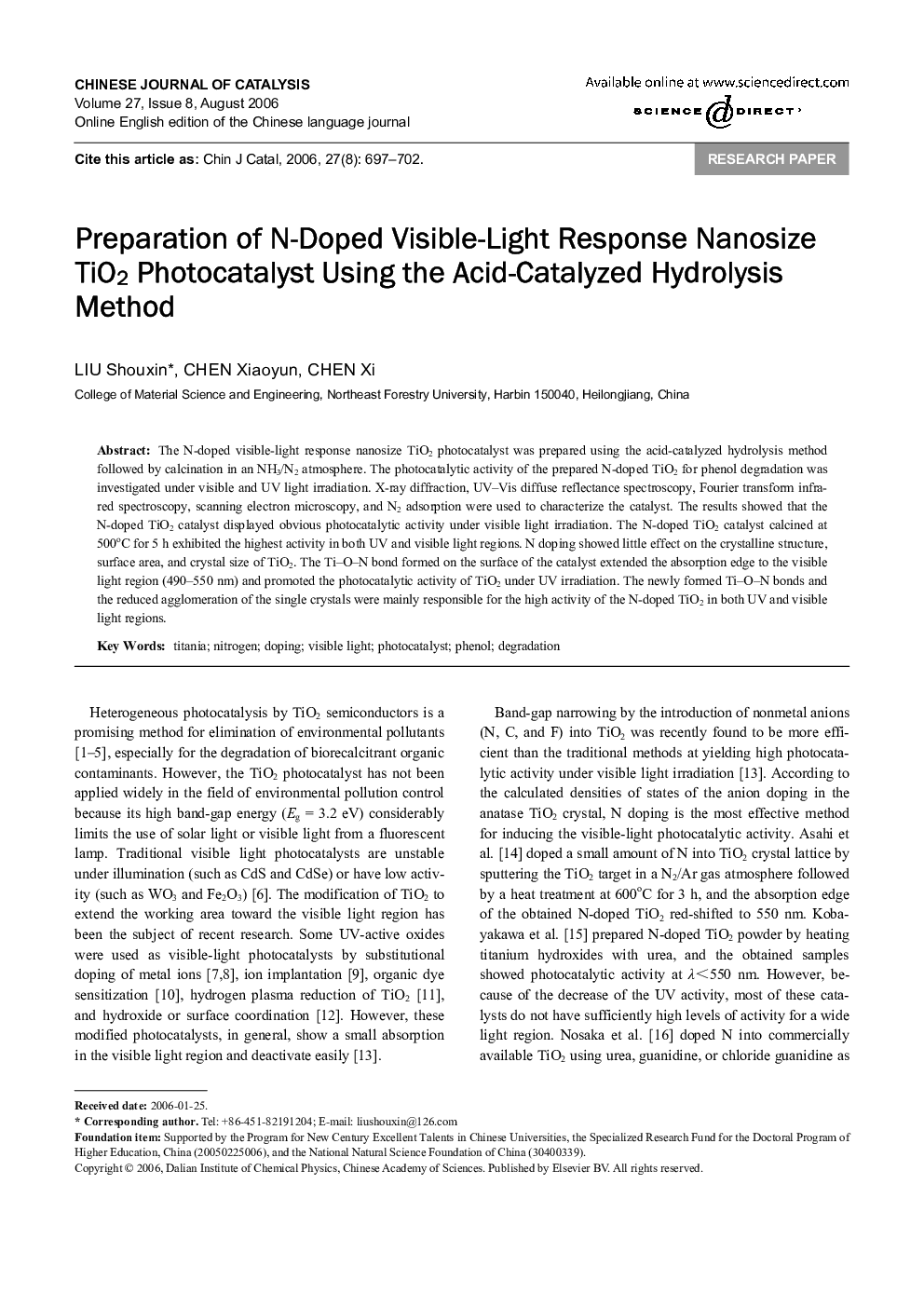| Article ID | Journal | Published Year | Pages | File Type |
|---|---|---|---|---|
| 59864 | Chinese Journal of Catalysis | 2006 | 6 Pages |
The N-doped visible-light response nanosize TiO2 photocatalyst was prepared using the acid-catalyzed hydrolysis method followed by calcination in an NH3/N2 atmosphere. The photocatalytic activity of the prepared N-doped TiO2 for phenol degradation was investigated under visible and UV light irradiation. X-ray diffraction, UV-Vis diffuse reflectance spectroscopy, Fourier transform infrared spectroscopy, scanning electron microscopy, and N2 adsorption were used to characterize the catalyst. The results showed that the N-doped TiO2 catalyst displayed obvious photocatalytic activity under visible light irradiation. The N-doped TiO2 catalyst calcined at 500°C for 5 h exhibited the highest activity in both UV and visible light regions. N doping showed little effect on the crystalline structure, surface area, and crystal size of TiO2. The TiON bond formed on the surface of the catalyst extended the absorption edge to the visible light region (490–550 nm) and promoted the photocatalytic activity of TiO2 under UV irradiation. The newly formed TiON bonds and the reduced agglomeration of the single crystals were mainly responsible for the high activity of the N-doped TiO2 in both UV and visible light regions.
